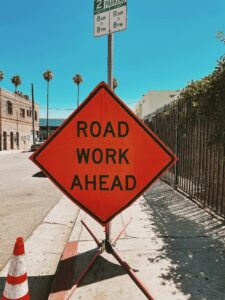Here is 5 things you need to implement for safety
In factory and industrial settings, safety isn’t just about compliance — it’s about protecting people, preventing disruptions, and maintaining operational efficiency. With audits becoming increasingly stringent and standards continuously evolving, proactive safety upgrades can help businesses stay ahead of the curve.
In this blog, we’ll look at five practical and high-impact safety upgrades every factory should consider, especially if an audit is on the horizon. These are simple, proven changes that make a real difference.
1. Clear and Durable Safety Signage

Proper signage is often the first line of defense in a busy industrial environment. It helps workers, contractors, and visitors navigate the facility safely.
Why it matters:
-
- Alerts workers to hazards, restricted areas, and emergency exits
-
- Supports compliance with OSHA and other regulatory standards
-
- Minimizes the risk of accidents caused by poor communication
Upgrade Tips:
-
- Replace faded, outdated, or unclear signs
-
- Use standardized icons and colors (e.g., red for danger, yellow for caution)
-
- Consider photoluminescent signs for better visibility in low light or power outages
Well-placed, easy-to-read signage is one of the simplest yet most effective upgrades you can make before any inspection.
2. Anti-Slip Flooring and Surface Treatments

Slips, trips, and falls are consistently among the most common workplace incidents, especially in areas with moisture, oils, or frequent foot traffic.
Why it matters:
-
- Reduces injury risk and potential liability
-
- Improves day-to-day safety for workers
-
- Demonstrates proactive risk management during audits
Upgrade Tips:
-
- Apply anti-skid tape or coatings to walkways, stairs, and ramps
-
- Use textured mats or flooring in high-risk zones
-
- Ensure cleaning and maintenance teams are trained to manage slippery areas
Auditors often pay attention to walkways and surfaces, so these upgrades go a long way toward a positive safety report.
3. Up-to-Date Lockout/Tagout (LOTO) Systems
LOTO procedures are critical for ensuring that machinery is properly shut off and cannot be started while maintenance or servicing is being performed.
Why it matters:
-
- Prevents accidental startups that could injure workers
-
- Required by law in many jurisdictions
-
- Frequently reviewed during safety audits
Upgrade Tips:
-
- Inspect your existing LOTO devices and procedures for gaps
-
- Clearly label all energy control points
-
- Train staff on proper LOTO protocols and documentation
-
- Invest in color-coded or device-specific lockout kits
A strong LOTO program signals a commitment to worker safety and operational discipline.
4. Improved Safety Zoning and Barrier Systems

Factories can be complex environments with a mix of people, machines, and moving vehicles. Defining zones and physical barriers can prevent accidents and help organize workflow more safely.
Why it matters:
-
- Keeps pedestrians and machinery safely separated
-
- Reduces confusion and traffic bottlenecks
-
- Makes emergency routes more visible and accessible
Upgrade Tips:
-
- Use floor markings to define walkways, work zones, and no-go areas
-
- Install bollards or railings near high-risk machinery
-
- Implement color-coded floor tape or paint to indicate different zones
These physical guides not only reduce the risk of accidents but also make your facility look more organized and audit-ready.
5. Regular Safety Training and Emergency Preparedness
Even with the best equipment and infrastructure, a safety program can fall short if employees aren’t trained or prepared for emergencies.
Why it matters:
-
- Ensures workers know how to respond to hazards or incidents
-
- Reinforces safety culture and accountability
-
- Often a required component of audit evaluations
Upgrade Tips:
-
- Conduct refresher safety training every quarter or biannually
-
- Run emergency drills (e.g., fire, chemical spill, evacuation)
-
- Document all training sessions and keep records up to date
Training helps your team respond effectively and keeps safety top-of-mind, which is something auditors appreciate.
Bonus: Conduct a Pre-Audit Safety Walkthrough
Before the actual audit, do a walkthrough with your internal team or a safety consultant. This helps catch small issues — like missing signage or worn-out tapes — that can easily be fixed in advance. It also demonstrates a proactive attitude toward safety and compliance.
Final Thoughts
Safety upgrades don’t need to be expensive or complicated. Simple measures — clear signs, non-slip surfaces, structured zones, reliable lockout systems, and regular training — can make a big impact.
By addressing these five essential areas, factories can improve day-to-day operations, reduce incident rates, and pass audits with confidence.
Looking for guidance on where to start?
Watermatt offers practical safety solutions tailored for industrial environments. We’re here to help you build a safer, smarter workspace — before the next audit and beyond.
